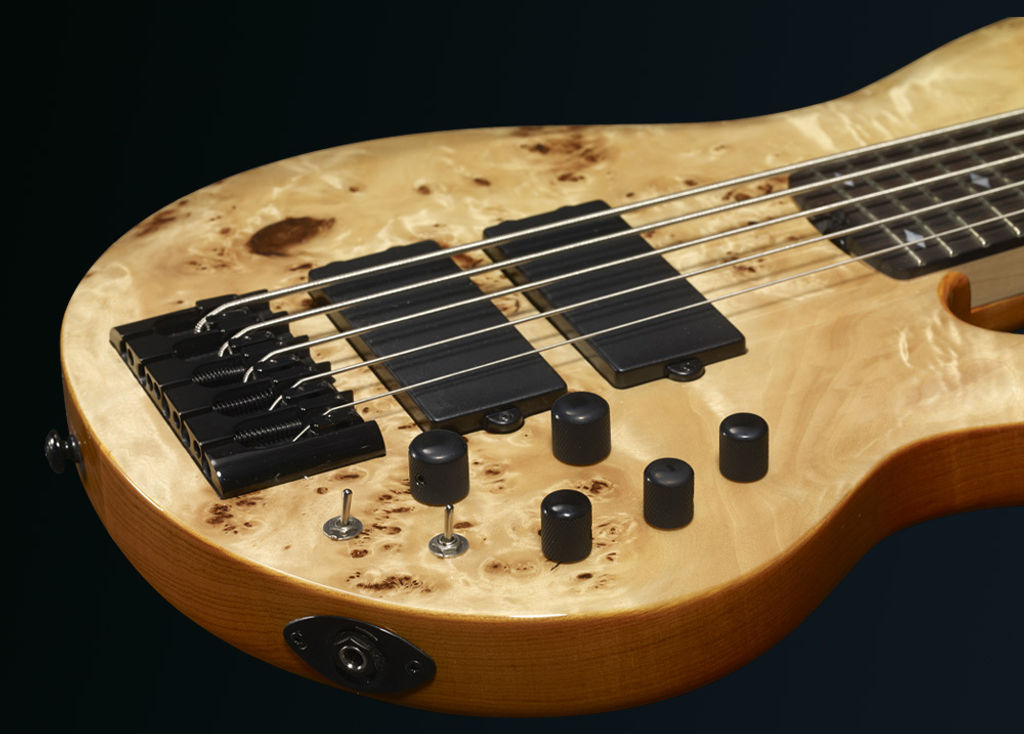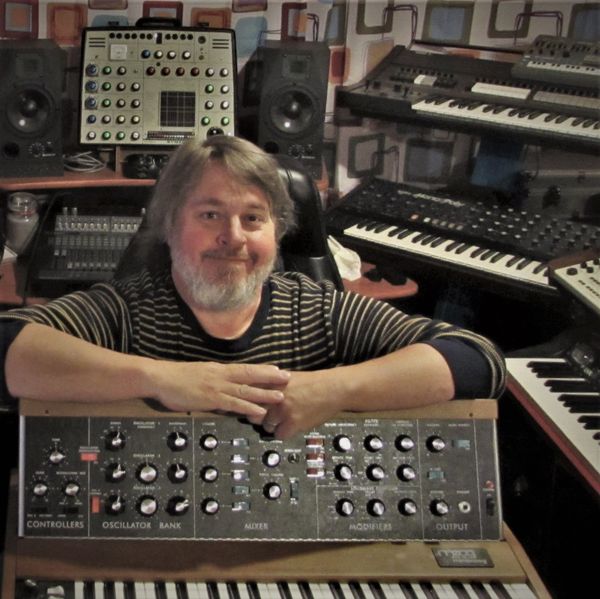Serious Tone Talk: Tone Stack EQ, Part 1
The Equalizer
In the world of movies and television, The Equalizer is a man with a mysterious past who relies on his training as a former intelligence officer to stand up for the innocent and oppressed, delivering cold vigilante justice on their behalf. In the world of bass amplification and audio reproduction, The Equalizer serves an equally dramatic role by selectively shaping the tonal color of your sound to deliver the optimum response, presence and clarity to your audience. Hartke has been an industry leader and innovator of professional bass amplification since the creation of the first aluminum cone bass speaker back in 1985. Today, Hartke bass amps employ various methods of Equalization, including the Hartke Tone Stack. The traditional tone stack dates back to the time of the original first popular bass guitar amplifiers; here, three controls – Bass, Middle, Treble – were literally “stacked” into a single interactive circuit to provide a wide degree of tone control. Moving a single knob in a tone stack configuration could have an effect on the overall tone, as well as on the response of the other controls in the circuit. In addition to the all-important Bass and Treble knobs, the unique Hartke Tone Stack uses both Shape and Frequency knobs to expand the critical tonal sculpting of the midrange response. Before we dig any further into the Hartke Tone Stack, let’s take a quick Equalizer refresher class.
Rainbows of Sound
Light is made up of the many different frequencies contained in the visual spectrum. A prism can reveal these different colors; photographers and lighting designers can use filters to emphasize or minimize the presence of certain colors. Likewise, sound is made up of the many different frequencies contained in the audio spectrum; the range of frequencies that can be heard by the human ear – and then some. The Equalizer effectively behaves as a filter to cut and/or boost a specific range of these frequencies, changing the unique timbre, or tonal color, of the sound. For starters, the word “Equalizer” can be a horrible misnomer. The goal is not for every frequency to have an equal voice. The results of such a system would be horrendous – with each hiss, whine or buzz receiving equal emphasis as the music being played. No, the Equalizer – or EQ for short – is designed to provide the user, performer, or audio professional with the tools to optimize the sound, provide tonal clarity, complement the music’s emotional content, and otherwise improve the overall listening experience. Knowing all of this, the question remains: how does an EQ shape the bass player’s sound?
Bottoms Up!
After folks like Leo Fender and Les Paul put the electric solid-body guitar on the map, the electric solid-body bass guitar followed soon after. Originally conceived as an alternative to the upright bass, the electric bass instantly took on a life of its own. The bass guitar found its way into rock ’n’ roll, country, jazz, blues and nearly every genre of popular music. Initially, the sound of the electric bass was the solid “thump, thump” of AM radio rock. But as music evolved and equipment improved, bass players and producers found new ways to define their sound. The “fuzz bass” sound found its way on to many a hit record. The Slap Bass and Thumb ‘n’ Pop styles created a new vocabulary for expressive performers (at the same time, creative compression would open up a world of dynamic possibilities). Ambitious players began to coax a richer and more defined sound from their instrument, and this helped to redefine the bass player’s roll in modern music. The common denominator in all of these innovations was the ability to achieve precise, meaningful harmonic control of the total bass sound – both the instrument and the amplification. Even today, one of the most common tonal schemes for the electric bass is to provide a full, rich fundamental tone and use select upper harmonics to define the plectrum noise, finger style, attack and the instrument character. This emphasis on lows and highs is achieved by “scooping” away some of the harsher midtones that may obscure the overall definition of the sound, and helping to keep the bass from clashing with other instruments occupying the same tonal space. Due to some diligent design work, the Hartke Tone Stack excels at this.
How the Hartke Tone Stack Works
As the name implies, a tone stack is literally a stack of knobs – Bass, Middle, Treble – each connected to a specific set of electronic components, yet all working together in a single circuit to define the tone. This interconnectivity is key; operating one control may influence the behavior of the others. The three knob tone stack has been around since the beginning of bass amplifiers. In fact, it is often referred to as the FMV (Fender Marshall Vox) tone stack circuit. The Hartke Tone Stack controls are also labelled Bass and Treble, but the enhanced 2-knob Mid-section offers both Shape and Frequency controls. Together, the Shape and Frequency knobs can scoop out some of the midrange frequencies by creating a “notch” filter. The Frequency knob sets the average frequency of the midrange band; the Shape knob determines the depth and contour of the areas on either side of the Frequency setting. The advent of slap bass, thumb ‘n’ pop playing, and to some extent the introduction of the digital CD have all contributed to defining the modern bass sound via some degree of midrange scoop. The Hartke Tone Stack design provides today’s bass performer with a massive range of tonal shadings and timbres that are available instantly, via just a few user-friendly controls.
Using the Hartke Tone Stack
To the performer, the Hartke Tone Stack circuit may at first seem puzzling; the controls are wildly interactive, and it’s hard to pin down a “flat” setting to use as a starting point for tonal exploration. It may be tempting to think of the Bass and Treble as simple boost/cut knobs and the Midrange Shape and Frequency as a sort of an isolated semi-parametric EQ, but you’ll find that the Hartke Tone Stack goes beyond these expectations, providing a unique range of control that brings out the best fidelity from almost any bass instrument. Setting the Bass, Shape and Treble controls to the 12 o’clock (mid) positions calls up a preset EQ curve that has been optimized to complement the response of the bass. By varying the Shape knob, one can often zero in on the “sweet spot” of the bass cabinet being used. From there, it’s both simple and inspiring to discover new tonal colors by experimenting with of each of the HartkeTone Stack knobs. Keep in mind that the Hartke Tone Stack controls are interactive, so keep revisiting each knob after you’re finished adjusting just one. While the ancestors of the tone stack circuitry date back to bass amplifiers of the 1950s, it took the engineers at Hartke, and droves of professional players, to perfect the Hartke Tone Stack. All manner of bass performers, playing on a vast array of instruments – fretless and fretted, upright and strapped on, solid and hollow bodies, four strings and more strings – contributed to fine-tuning the Hartke Tone Stack EQ, delivering exceptional tonal presence and response for nearly every player. In the end, the Hartke Tone stack is all about shifting the midrange response and determining where the highs and lows will sit for the best possible sound.
Read Part 2 here



